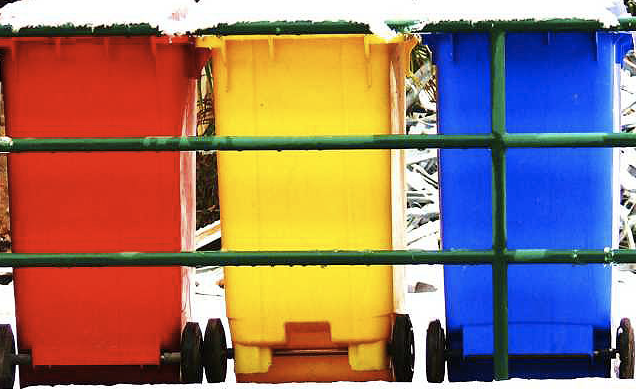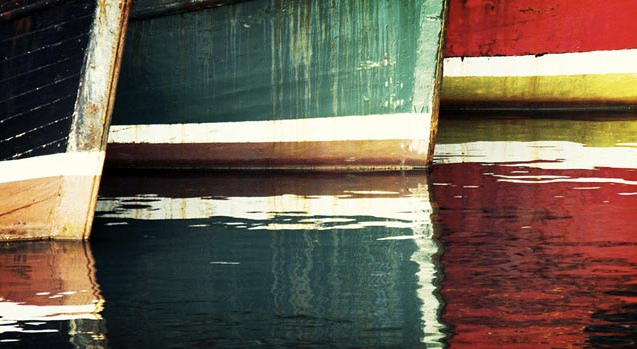One of the important characteristics of photography is that it is used across public and private life. Most people have not printed a newspaper or erected a statue, but everyone has taken snapshots. Photography is a democratic art, and so we are exposed to a wide range of images that in turn offer many different moods. Likewise, there always is an audience for those images that stand out from the rest because they are so evocative. This blog devotes a lot of space to those images that are patently newsworthy and so caught up in complex structures of meaning and power. Some images, however, ought to be seen as poems–indeed, as small poems that capture a specific experience, emotion, or moment of reflection.
The visual poem can stand for everything from state power to personal serenity. There are always court poets and the course of empire has its bards–think of Kipling. The image below is as good as anything intoned at a public ceremony.
This photograph of a space shuttle launch is a visual gem–and also, of course, laughable in its fully realized phallic symbolism. But those who groove on shuttle launches will love it. This is the dream of technocratic power: sheer technological ascendancy, harnessing nature to overcome gravity on the way to a glorious apotheosis with the heavens. And safely, even serenely so. Set at a distance across the calm, glassy water, any sense of risk or cost is muted. The poem takes one outside of any context of debate, providing instead a fantasy of divinely ordained connection with great but not dangerous power.
My placing the image in the context of poetry is odd, as most of the images that one could include are from the opposite end of the spectrum between public institutions and private pleasures. These include the endless supply of nature photos; look, for example at the many fine images by amateur photographers in The Daily Dozen at the National Geographic website or at similar digital archives provided by online news services. Some appear as well in the daily slide shows, and these images clearly are offered as moments of respite from the insistent clanging of the news. Images like this one:
This photo of incense smoke could be of a diaphanous fabric, the body it covers, the desert at night, sound waves, the music of the spheres. . . . Note also that it shares key elements of design with the one before it: smoke, light, and darkness combine to shape a dynamic form both composed and possibly eternal. Here, however, one joins that deep beauty by letting the image sink into the soul rather than watching in awe from a distance.
There are many poems, and many moods. Let me show you two more that editors thought we might want to see this spring.
This image is literally reflective. Like the others, it suggests an essential harmony between nature and culture. Now, however, the objects are neither grand nor miniature but rather set to human scale. The boats’ colors, like the boats, are neatly demarcated in the water, suggesting social harmony as well. And they are both worn and colorful. Worn by good use but still distinctive, suggesting that although sharing a common mortality we can enjoy our individuality. Or, on reflection, we can do so if we don’t move too fast or demand too much.
One should not let a moral ruin a good poem, so I’ll finish with one more image:

Like the one before it, we see three colors and an unspoken coordination of nature and culture. Bright, plastic trash cans stand like crocuses in the late spring snow. Again, the coordination of the differently colored canisters suggests three households getting along easily. And just as the boats were in the common space of a harbor, here the ritual form of garbage collection has the public world as background for enjoying a moment of private delight. So perhaps there is a moral after all. This photograph is an image of hope and good cheer as it can be achieved in daily life. Empire will not go away, but spring will come.
Photographs by David Bortnick/NASA; Anna Arca/Guardian Unlimited; Rob Garbett/Guardian Unlimited; Leander Starr Jameson/Guardian Unlimited.



You post took me in two directions:
First, thinking of the tradition of photomontage, known in its earliest days also as “pasted photography” or “picture poems:” A blog devoted to photographs and visual practices may itself be a form of photomontage, “cutting and pasting” taking on a new meaning of course, but both serving as a means of commentary and critique of photography and the culture that produces it, both juxtaposing the private and the public, both particularly vital in times of declining Empire and war.
And then: Your images here engage in an interesting dialogue with other, less serene photographs from past posts. You suggest that looking itself needs moments of respite – free from the “insistent clanging of the news” – looking that is too fast, too fraught.
I am reminded of the famous poem about standing, staring, watching, and seeing, and whose title is perhaps part of the problem: who in Empire can afford “Leisure?”
See http://www.englishverse.com/poems/leisure
But if leisure promotes an attitude of reflection, and if we update the bucolic imagery of Davies’ original with, for example, an urban landscape such as that provided by your garbage can image, leisure might be seen as a valuable state of looking, one that a democratic society would hope is enjoyed by more rather than only a few.
er: Thoughtful comments such as yours help us keep this blog going. Increasingly in the US, leisure has to be stolen, as in stealing a glance. And despite the enormous social energy in circulation so many people are tired, too tired to take the time to see. And who can blame them? I’ve been feeling that way myself, but your note reminds me that we can do better than that.